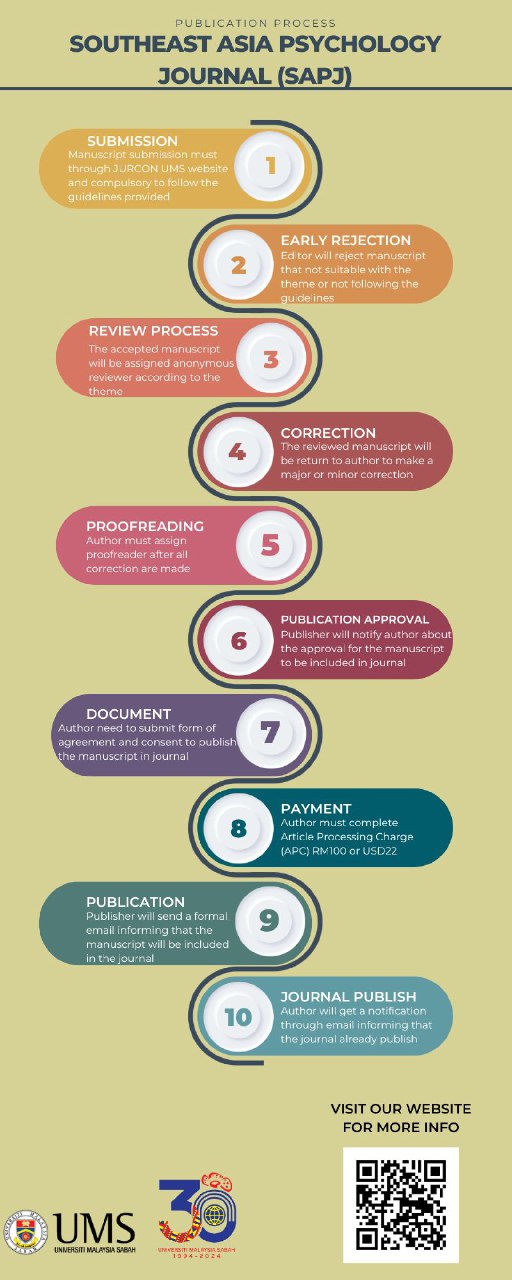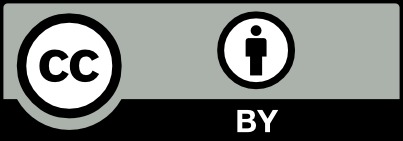INFORMATION LITERACY: ITS RELEVANCE TO YOUTH MENTAL HEALTH IN DEVELOPING COUNTRIES
DOI:
https://doi.org/10.51200/sapj.v9i1.5117Keywords:
Adolescents, Developing Countries, Mental Health, Information literacyAbstract
Information literacy is an overarching concept that incorporates many of the diverse literacy areas important for adolescent mental health. Adolescents are in a sensitive stage in their development, where they are susceptible to the possible emotional and cognitive adverse effects of the huge amount of information they have to deal with. For them, the ability to access the most useful information, critically evaluate it, reflect on it and being able to use it for the benefit of oneself and others is vital. As adolescents in developing countries are being rapidly exposed to information from various types of social media and ways of living that require the abilities described in information literacy, looking at teaching these skills in formal and informal ways is important.
References
Abdhulla, M. (2017). Reforming Education System in Developing Countries. International Journal of Education and Research, 5(7), 1. https://www.ijern.com/journal/2017/July-2017/25.pdf
Abi-Jaoude, E., Naylor, K. T., &Pignatiello, A. (2020). Smartphones, social media use and youth mental health. CMAJ: Canadian Medical Association journal = journal de l'Associationmedicalecanadienne, 192(6), E136–E141. https://doi.org/10.1503/cmaj.190434
Allen, J. G., Fonagy, P., & Bateman, A. W. (2008). Mentalizing in clinical practice. American Psychiatric Publishing, Inc. Alvermann, D. E. (2002). Effective Literacy Instruction for Adolescents. Journal of Literacy Research, 34(2), 189–208. https://doi.org/10.1207/s15548430jlr3402_4
American Academy of Pediatrics. (2018). Children and media tips from the American Academy of Pediatrics. https://www.aap.org/en-us/about-the-aap/aap-press-room/news-features-and-safety-tips/Pages/Children-and-Media-Tips.aspx
Anderson, M., & Jiang, J. (2018). Teens, Social Media, & Technology. Pew Research Center Internet & Technology. https://www.pewresearch.org/internet/2018/05/31/teens-social-media-technology-2018/.
Attygalle, U. R., Perera, H., & Jayamanne, B. D. W. (2017). Mental health literacy in adolescents: ability to recognise problems, helpful interventions and outcomes. Child and Adolescent Psychiatry and Mental Health, 11(1). https://doi.org/10.1186/s13034-017-0176-1
Bove D, Bove RM, Caccavale S, Bravaccio C, Marino M, & La Montagna M. (2016). Adolescence, imperceptible boundary between normality and pathology: a literature review. Minerva Pediatr. 68(2), 148-51. PMID: 27002489.
Bruce, C. S. (2004). Information literacy as a catalyst for educational change: A background paper. In Lifelong learning: Whose responsibility and what is your contribution? ed. P. A. Danaher. Papers from the 3rd international lifelong learning conference, 8-19. Rockhampton, Qld.: Central Queensland University Press.
Burton, M. (2019). Suicide and self-harm: vulnerable children and young people. Practice Nursing, 30(5), 218–223. https://doi.org/10.12968/pnur.2019.30.5.218
Computer Literacy Statistics – 2019 (Annual). (2019). Department of Census and Statistics Sri Lanka. http://www.statistics.gov.lk/Resource/en/ComputerLiteracy/Bulletins/AnnualBuletinComputerLiteracy-2019
Davis, S. K., Nowland, R., & Qualter, P. (2019). The Role of Emotional Intelligence in the Maintenance of Depression Symptoms and Loneliness Among Children. Frontiers in Psychology, 10, 1. https://doi.org/10.3389/fpsyg.2019.01672
Eisenberg, M., & Berkowitz, R. (1990). Information problem solving, the Big Six approach to Library and Information Skills instruction. Norwood N.J, Ablex.
Freeman, H., & Almond, T. (2009). Predicting Adolescent Self Differentiation from Relationships with Parents and Romantic Partners. International Journal of Adolescence and Youth, 15(1–2), 121–143. https://doi.org/10.1080/02673843.2009.9748023
Forster, M. (2015). Refining the definition of information literacy: the experience of contextual knowledge creation. Journal of Information Literacy, 9(1), 62-73. doi:10.11645/9.1.1981
Ganesan, S., Ravishankar, S. L., & Ramalingam, S. (2018). Are body image issues affecting our adolescents? A cross-sectional study among college going adolescent girls. Indian Journal of Community Medicine, 43(5), 42. https://doi.org/10.4103/ijcm.ijcm_62_18
Gentile, D. A., Bailey, K., Bavelier, D., Brockmyer, J. F., Cash, H., Coyne, S. M., Doan, A., Grant, D. S., Green, C. S., Griffiths, M., Markle, T., Petry, N. M., Prot, S., Rae, C. D., Rehbein, F., Rich, M., Sullivan, D., Woolley, E., & Young, K. (2017). Internet Gaming Disorder in Children and Adolescents. Pediatrics, 140(Supplement 2), S81–S85. https://doi.org/10.1542/peds.2016-1758h
Gresham, K. (2006, March). Information Literacy White Paper. University of Vermont. http://www.uvm.edu/~pblackme/info_lit_white%20paper-Mar06-1.pdf
Herrero-Diz, P., Conde-Jiménez, J., & Reyes de Cózar, S. (2020). Teens’ Motivations to Spread Fake News on WhatsApp. Social Media + Society, 6(3), 205630512094287. https://doi.org/10.1177/2056305120942879
Hoq, K. M. G. (2016). Information Overload: Causes, Consequences and Remedies - A Study. Philosophy and Progress, 49–68. https://doi.org/10.3329/pp.v55i1-2.26390
Jorm, A. F. (2000). Mental health literacy. British Journal of Psychiatry, 177(5), 396–401. https://doi.org/10.1192/bjp.177.5.396
Kavanaugh, E. B. (2021). Information Literacy, Mental Health, and Lifelong Learning: Librarians and Health Care Professionals in Academic, Clinical, and Hospital Settings. Journal of Hospital Librarianship, 1–16. https://doi.org/10.1080/15323269.2021.1860449
Kessler, R. C., Amminger, G. P., Aguilar-Gaxiola, S., Alonso, J., Lee, S., & Ustün, T. B. (2007). Age of onset of mental disorders: a review of recent literature. Current opinion in psychiatry, 20(4), 359–364. https://doi.org/10.1097/YCO.0b013e32816ebc8c
Kim, E., & Yang, S. (2015). Internet literacy and digital natives’ civic engagement: Internet skill literacy or Internet information literacy? Journal of Youth Studies, 19(4), 438–456. https://doi.org/10.1080/13676261.2015.1083961
Kulkarni, D. V. P., Kumar, D. L. S., & Naidu, D. L. V. R. (2019). Smart phone use and sleep disturbances, depression and anxiety in adolescents. Public Health Review: International Journal of Public Health Research, 6(2), 61–67. https://doi.org/10.17511/ijphr.2019.i2.03
Lloyd, A. (2003). Information Literacy. Journal of Librarianship and Information Science, 35(2), 87–92. https://doi.org/10.1177/0961000603352003 Memon, A. M., Sharma, S. G., Mohite, S. S., & Jain, S. (2018). The role of online social networking on deliberate self-harm and suicidality in adolescents: A systematized review of literature. Indian journal of psychiatry, 60(4), 384–392. https://doi.org/10.4103/psychiatry.IndianJPsychiatry_414_17
Nesi, J. (2020). The Impact of Social Media on Youth Mental Health. North Carolina Medical Journal, 81(2), 116–121. https://doi.org/10.18043/ncm.81.2.116
Park, H., Kim, H. S., & Park, H. W. (2020). A Scientometric Study of Digital Literacy, ICT Literacy, Information Literacy, and Media Literacy, Journal of Data and Information Science (published online ahead of print 2020), 000010247820210001. doi: https://doi.org/10.2478/jdis-2021-0001 Presidential Committee on Information Literacy: Final Report. (2006). American Library Association. http://www.ala.org/acrl/publications/whitepapers/presidential Salovey, P., and Mayer, J. D. (1990). Emotional intelligence. Imag. Cogn. Persona. 9, 185–211. https://doi.org/10.2190/DUGG-P24E-52WK-6CDG
Sohn, S. Y., Rees, P., Wildridge, B., Kalk, N. J., & Carter, B. (2019). Prevalence of problematic smartphone usage and associated mental health outcomes amongst children and young people: a systematic review, meta-analysis and GRADE of the evidence. BMC Psychiatry, 19(1). https://doi.org/10.1186/s12888-019-2350-x
The Global Learning Crisis,Why every child deserves a quality education. (2013). UNESCO, 7, place de Fontenoy, 75352 Paris 07 SP, France. https://unesdoc.unesco.org/ark:/48223/pf0000223826
Turner KH, Jolls T, Hagerman MS, O'Byrne W, Hicks T, Eisenstock B, et al. (2017). Developing digital and media literacies in children and adolescents. Pediatrics, 140: S122–6.
UNESCO Office Bangkok and Regional Bureau for Education in Asia and the Pacific. (2020). Media and information literacy education in Asia: exploration of policies and practices in Japan,Thailand, Indonesia, Malaysia, and the Philippines. UNESCO,7, place de Fontenoy75352 Paris 07 SP, France. https://unesdoc.unesco.org/ark:/48223/pf0000374575 Weiner, J. (2011). Is there a difference between critical thinking and information literacy? Journal Of Information Literacy, 5(2), 81-92. doi:10.11645/5.2.1600
West, M., & Chew, H. E. (2014). Reading in the mobile era: a study of mobile reading in developing countries. UNESCO, 7, place de Fontenoy, 75352 Paris 07 SP, France SBN 978-92-3-100023-2. https://unesdoc.unesco.org/ark:/48223/pf0000227436
Wijetunga, D. (2014). The Digital Divide Objectified in the Design: Use of the Mobile Telephone by Underprivileged Youth in Sri Lanka. Journal of Computer-Mediated Communication, 19(3), 712–726. https://doi.org/10.1111/jcc4.12071 World Bank. (2016). “World Development Report 2016: Digital Dividends.” Overview booklet. World Bank, Washington, DC. License: Creative Commons Attribution CC BY 3.0 IGO







